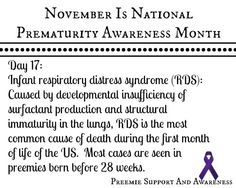surfactant in premature infants
Premature infants may be born before their lungs make enough surfactant. Review the appropriate monitoring of surfactant therapy.

Pin By Daisy King On March For Babies Premature Birth Baby Health March Of Dimes
Findings In this cohort study of 6542 infants born between 22 weeks 0 days and 26 weeks 6 days at 68 German tertiary level neonatal intensive care units 2534.

. Describe the adverse effects of surfactant therapy. As part of the Nitric Oxide Chronic Lung Disease Trial of inhaled nitric oxide we examined surfactant in a subpopulation of enrolled infants. Data was analyzed from 68 tertiary level neonatal intensive care units in Germany showing the results of infants treated with LISA compared to those not treated with.
Less invasive surfactant administration LISA may reduce risk of adverse outcomes in early preterm infants according to a study published by the Journal of the American Medical Association. This approach runs the risk of under-treating those with respiratory distress syndrome RDS for whom surfactant administration is of paramount importance. They reduce the risk of air leakage borderline personality disorder and neonatal mortality1 2.
Non-invasive respiratory support is increasingly used for the management of respiratory dysfunction in preterm infants. We conclude that many intubated premature infants are deficient in active surfactant in part due to increased intra-alveolar metabolism low SP-B content and protein inhibition and that the severity of this deficit is predictive of BPD. We hypothesized that inhaled nitric oxide treatment of premature infants at risk for bronchopulmonary dysplasia would not adversely affect endogenous surfactant function or compositionMETHODS.
Respiratory distress syndrome RDS is the prototypical disease of surfactant deficiency in preterm newborn infants. Patients and methods. However transient adverse events associated with beractant calfactant or poractant alfa administration in premature infants include bradycardia hypotension hypertension endotracheal tube blockage oxygen desaturation apnea hypocarbia and hypercarbia 5 7.
Evidence on surfactant in preterm infants The following summarizes the evidence on exogenous surfactant in preterm infants. This prevents the alveoli from sticking together when your baby exhales breathes out. Surfactant coats the alveoli the air sacs in the lungs where oxygen enters the body.
After birth they need respiratory support and are said to develop RDS. Hartel C et al Association of administration of surfactant using less invasive methods with outcomes in extremely preterm infants less than 27 weeks of gestation JAMA Netw. Why is surfactant so important.
A total of 68 preterm newborn infants with gestational age 32 weeks affected by unusually severe RDS were analysed for mutations in SFTPB SFTPC and ABCA3Therapies included oxygen supplementation nasal CPAP different modalities of ventilatory support administration of exogenous surfactant inhaled nitric oxide and steroids. Natural versus synthetic surfactants Both natural and synthetic surfactants are effective in the treatment and prevention of RDS. Surfactant is a mixture of fat and proteins made in the lungs.
Exogenous surfactants are generally viewed as safe and well tolerated. In infants who do not receive prophylaxis earlier treatment before 2 hours has benefits over later treatment. An increasing number of infants received surfactant via INSURE from 2005 to 2015 from 1697 19 to 3368 36.
Clements for his brilliant studies defining and describing the role of pulmonary surfactant and in developing a life-saving artificial surfactant now used in premature infants around the world this 1994 Albert Lasker Clinical Medical Research Award is given. The uptrend in administration via INSURE coincides with increased supporting evidence. 1819 when compared with animal-derived surfactant beractant or poractant lucinactant was shown to be equivalent.
The use of prophylactic surfactant administered after initial stabilization at birth to infants at risk for RDS has benefits compared with rescue surfactant given to treat infants with established RDS. Outline the techniques for improving care coordination amongst the interprofessional team by limiting the invasivity of surfactant therapy. Question Is the use of less invasive surfactant administration LISA in extremely preterm infants of less than 27 weeks gestational age associated with adverse outcomes of prematurity.
Recently the OPTIMIST trial found higher mortality rates in the subgroup of infants born at 25 to 26 weeks gestational age GA who received surfactant treatment while spontaneously breathing. The majority of surfactant given to preterm infants is administered off-label. A synthetic surfactant lucinactant that contains a 21-amino acid peptide that mimics sp-b activity has recently been approved for the prevention and treatment of rds in preterm infants.
Identify the mechanism of action of surfactant. Infants born at the extremes of viability 28 weeks gestational age have immature lungs with severe deficiency of surfactant production. The inclusion of less invasive surfactant administration LISA in the care of preterm infants has been found to be beneficial for respiratory outcomes.
Exogenous surfactant replacement and non-invasive respiratory support NRS have become the most successful treatments for preterm infants with respiratory distress syndrome RDS.

November 17th World Prematurity Day No Holding Back

Pin By Leann Behrend Mongelluzzo On Giving Back March Of Dimes Prematurity Awareness Premature

Preemiesupportandawareness Prematurity Awareness Prematurity Awareness Month Preemie Quotes

Pin By Lama A On Pediatric Respiratory Distress Syndrome Vital Signs Pediatrics

5 Reasons Why A Premature Birth Is A Form Of Loss Premature Birth Preemie Mom Premature

Respiratory Failure Rosh Review Google Search Endocrine System Thyroid Function Tests Thyroid Function

Respiratory Distress Syndrome Of Newborns A Brief Discussion

Respiratory Distress Syndrome Rds

Intricate Pattern Has Surprising Origin Patterns In Nature Intricate Pattern

Research On Preterm Birth Malamalama

From Mini To Moose Home Facebook

Neonatal Breathing Mismanagement Cerebral Palsy Hie Pvl And Birth Injuries Nursing School Survival Pediatric Nursing Nursing School Notes






